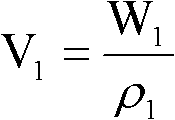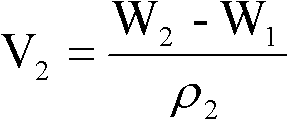Modified silicon dioxide and high-property lithium ion battery diaphragm and application thereof
A lithium-ion battery, silicon dioxide technology, applied in silicon dioxide, silicon oxide, battery pack components and other directions, can solve the problems of complex process, decreased membrane mechanical strength, thick diaphragm thickness, etc., and achieves a simple and easy preparation process. The effect of industrialization and good film strength
- Summary
- Abstract
- Description
- Claims
- Application Information
AI Technical Summary
Problems solved by technology
Method used
Image
Examples
Embodiment 1
[0061] A modified silica prepared by the following method:
[0062] (1) Disperse 20g of silicon dioxide with a particle size of 90nm in 600ml of anhydrous toluene, add 100g of aminopropyltriethoxysilane, fill with nitrogen and heat to boiling, then reflux at constant temperature (105°C) for 48h, and then sequentially Wash with anhydrous toluene and anhydrous acetone, and dry in vacuum to obtain aminated silicon dioxide;
[0063] (2) Disperse 15 g of aminated silicon dioxide in 300 ml of anhydrous toluene, add 80 g of triethylamine, and add 20 g of 2-bromoisobutyryl bromide dropwise in an ice-water bath. Then cancel the ice-water bath and allow the reaction system to naturally warm up to 20°C for 4 hours, and then wash with acetone, water, and acetone precipitation successively. Vacuum drying, obtains the silicon dioxide that has ATRP initiator on the surface;
[0064] (3) in the round-bottomed flask of 100ml, the surface that adds 30g (0.30mol) methyl methacrylate, 12.5g (2m...
Embodiment 2
[0070] A modified silica prepared by the following method:
[0071] (1) Disperse 25g of silicon dioxide with a particle size of 300nm in 600ml of anhydrous toluene, add 100g of aminopropyltriethoxysilane, heat to boiling after filling with nitrogen, then reflux at constant temperature (105°C) for 48h, and then sequentially Wash with anhydrous toluene and anhydrous acetone, and dry in vacuum to obtain aminated silicon dioxide;
[0072] (2) Disperse 20 g of aminated silicon dioxide in 300 ml of anhydrous toluene, add 80 g of pyridine, and drop in 20 g of 2-bromoisobutyryl bromide in an ice-water bath. Then cancel the ice-water bath and allow the reaction system to naturally warm up to 30°C for 4 hours, and then use acetone, water, and acetone for precipitation and washing in sequence. Vacuum-dried to obtain silicon dioxide with ATRP initiator on the surface;
[0073] (3) Add 42.7g (0.30mol) butyl methacrylate, 10g (1.60mmol) of silicon dioxide, 1.3077g (3.20mmol) of ATRP initi...
Embodiment 3
[0079] A polyolefin microporous diaphragm for a lithium ion battery, prepared by the following method:
[0080] (1) Mix 100g of the modified silicon dioxide prepared in Example 1 with 125g of ultra-high molecular weight polyethylene (the intrinsic viscosity measured in decahydronaphthalene at 135°C is 22dL / g), and then add 1250g of ordinary polyethylene resin for co- Mixing and granulation to obtain modified masterbatch;
[0081] (2) Melt, blend and extrude 5000g of modified masterbatch and 45000g of polyethylene resin through a twin-screw (or single-screw) extruder, with a melt temperature of 200°C and a melt draw ratio of 400 times, and crystallize under the stress field , forming a diaphragm with a hard elastic structure;
[0082] (3) Use a uniaxial stretching machine to continuously stretch the membrane, the stretching ratio is 2 times, and the stretching temperature is 100°C. After stretching, it is heat-set at 125°C for 10 minutes to prepare polyolefin for lithium-ion b...
PUM
| Property | Measurement | Unit |
|---|---|---|
| Intrinsic viscosity | aaaaa | aaaaa |
| Intrinsic viscosity | aaaaa | aaaaa |
| Intrinsic viscosity | aaaaa | aaaaa |
Abstract
Description
Claims
Application Information
 Login to View More
Login to View More - R&D
- Intellectual Property
- Life Sciences
- Materials
- Tech Scout
- Unparalleled Data Quality
- Higher Quality Content
- 60% Fewer Hallucinations
Browse by: Latest US Patents, China's latest patents, Technical Efficacy Thesaurus, Application Domain, Technology Topic, Popular Technical Reports.
© 2025 PatSnap. All rights reserved.Legal|Privacy policy|Modern Slavery Act Transparency Statement|Sitemap|About US| Contact US: help@patsnap.com



